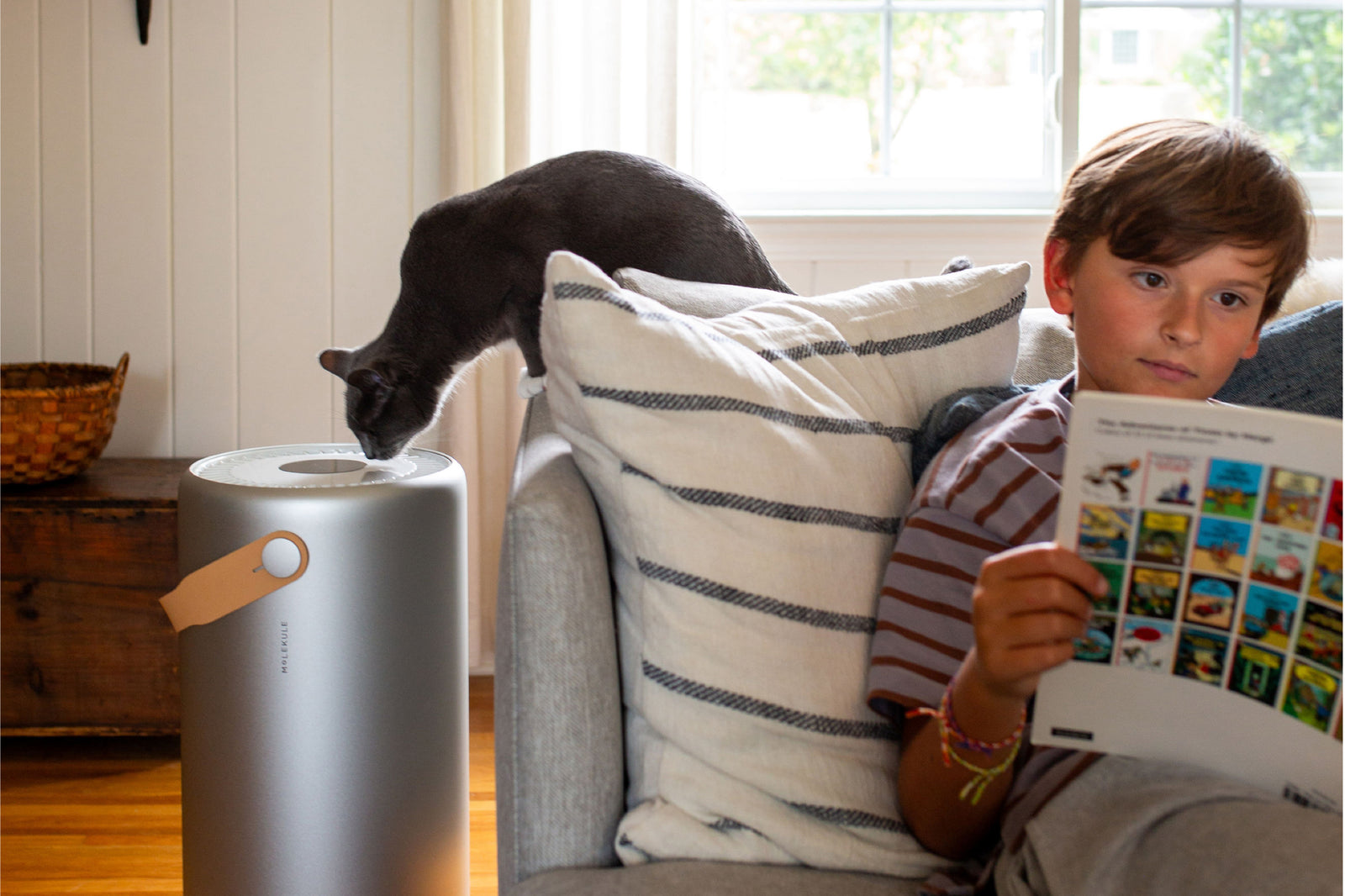On paper, cat dander and dandruff seem like the same thing. They’re both made of dead skin cells, after all. However, one is a completely normal bodily function, and the other is a sign that your cat’s skin isn’t as healthy as it should be. Read on for our breakdown of how to tell the difference between cat dander and dandruff, what causes each, and at-home tips for caring for your cat’s skin health.
What is cat dander?
Dander is another word for dead skin cells. Like humans, cats constantly produce new skin cells and shed old ones. It’s a natural, healthy process. As older skin cells die, they flake off in microscopic dander pieces that stick to your cat’s fur. Dander may be removed from the fur when your cat grooms themselves, or it may hitch a ride on the fur your cat leaves behind when they shed. All cats produce dander, even hairless or “hypoallergenic” breeds.
Most people who experience cat allergies are sensitive to a specific protein called Fel d 1 that’s found in the saliva, skin, and anal glands of cats. While different cats may produce different levels of this protein (for example, female cats typically make less than males), all cat dander contains at least some Fel d 1.
What is cat dandruff?
Cat dandruff is a condition in which a cat sheds dead skin cells in large pieces instead of microscopic ones. If your cat has dandruff, you’ll see thin white flakes spread throughout their fur and on their bedding and furniture. Scratching or petting your cat can create more flakes and send some flying into the air. Dandruff is a sign that your cat’s skin health may need some extra attention—it usually means their skin is either too dry or too oily. When a cat’s skin is too dry, the top layer of skin can start to crack and flake off. Oily skin, on the other hand, can trap dead skin cells until they fall off in patches, leading to flaking, scaling, itching, and excess hair loss.

Cat dander vs. cat dandruff
Cat dander and dandruff are both made up of dead skin cells, but one is perfectly natural, and the other may be a sign of a bigger health issue. Here’s a breakdown of how to tell the difference between dander and dandruff.
Cat dander is:
- Natural and healthy;
- Not preventable;
- Too small to see with the naked eye;
- Not accompanied by noticeable symptoms;
- Small enough to float through the air;
- Likely to cause allergy symptoms in people with cat allergies.
Cat dandruff is:
- A sign of a potential health problem;
- Treatable and preventable;
- Visible white flakes on the cat’s skin or fur;
- Sometimes associated with itching, dull fur, hair loss, and scaly or red patches of skin;
- Bigger flakes that are less likely to float in the air;
- Less likely to be inhaled but can still cause allergy symptoms.
How to get rid of cat dandruff
If your cat has dandruff, it’s a sign that something’s off with their skin health. To get rid of those pesky flakes, you’ll need to address whatever is causing the dandruff in the first place. Don’t be afraid to ask your vet for help—they should be able to give you advice for treating cat dandruff and help you decide whether you should take your feline friend in for a checkup.
Often, cat dandruff can be treated with simple at-home remedies, including:
- Grooming your cat every day with a wire-bristle cat brush;
- Switching to a food with more essential fatty acids, such as omega-3 (ask your vet for recommendations);
- Bathing your cat with a dandruff-treatment cat shampoo;
- Switching from a water bowl to a fountain to encourage your cat to drink more water throughout the day;
- Using a humidifier to keep the air in your home from getting too dry;
- Promoting your cat’s wellness by encouraging stimulating exercise and decreasing causes of stress.
For a more in-depth look at cat dander, check out our post on what causes cat dandruff and how to get rid of it.

How to manage household cat dander
Dander is a natural part of living with a cat, but you can take steps to reduce its presence in your home with regular cleaning to remove dust and shed fur from your floors, bedding, and furniture. You can also use an air purifier to trap airborne dander and other pollutants that may trigger asthma and allergy symptoms. To learn more, read our Guide to Air Purifiers for Pet Owners With Allergies.







